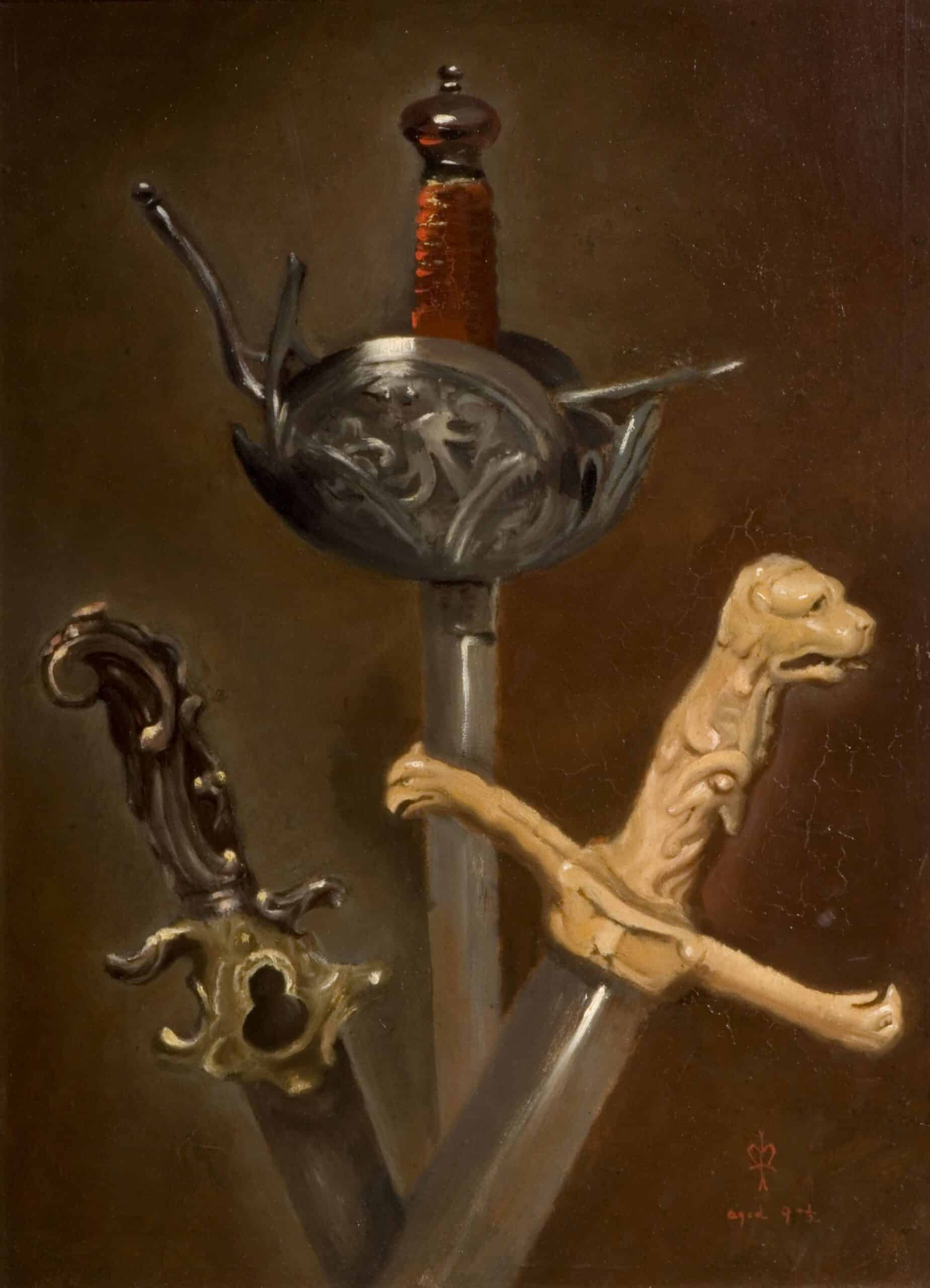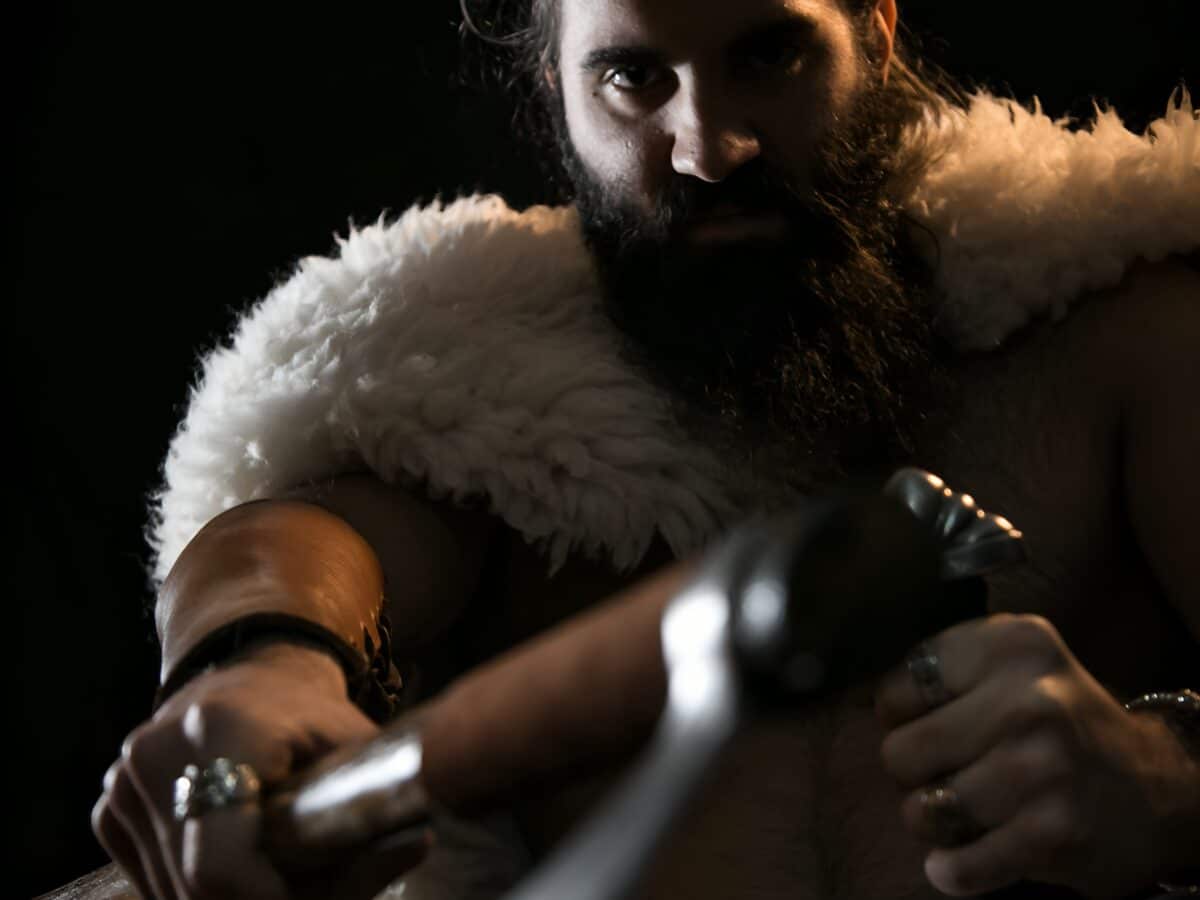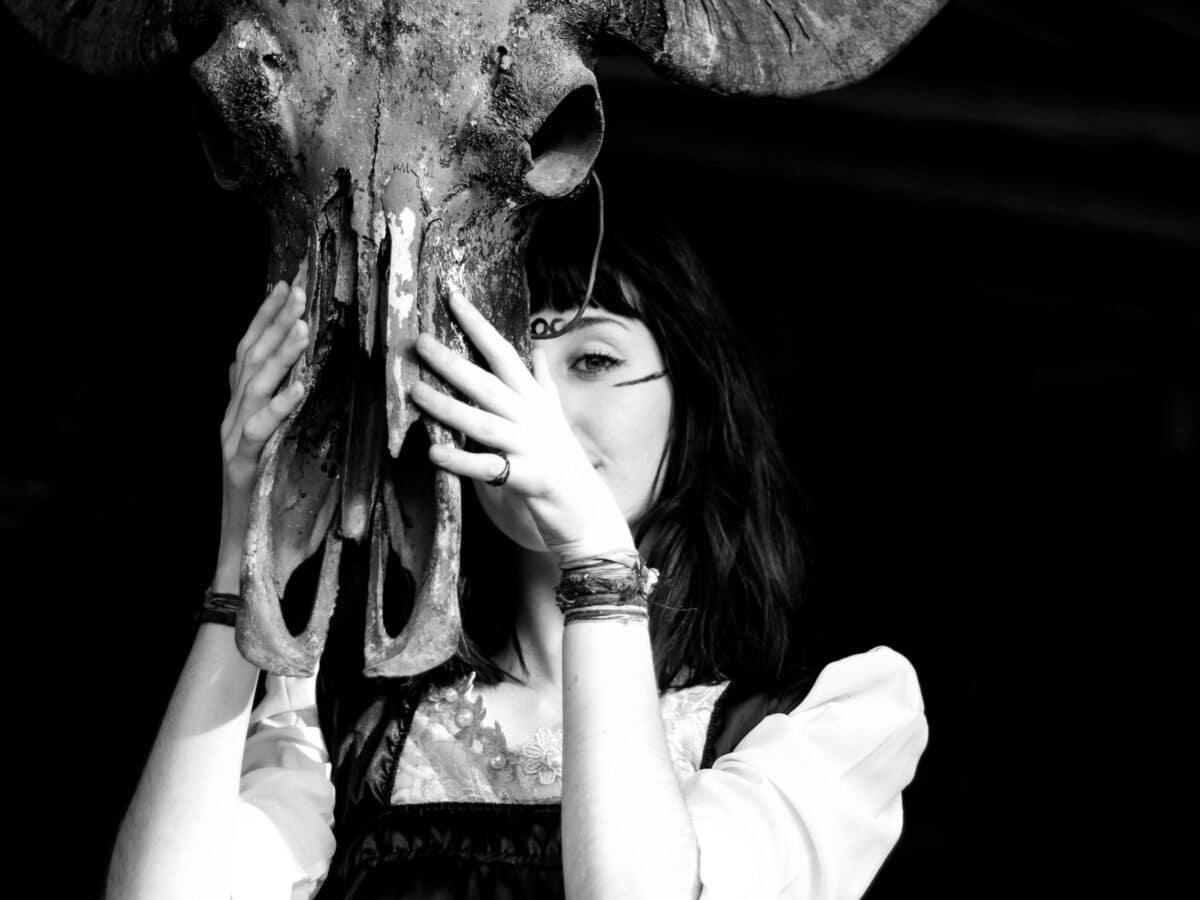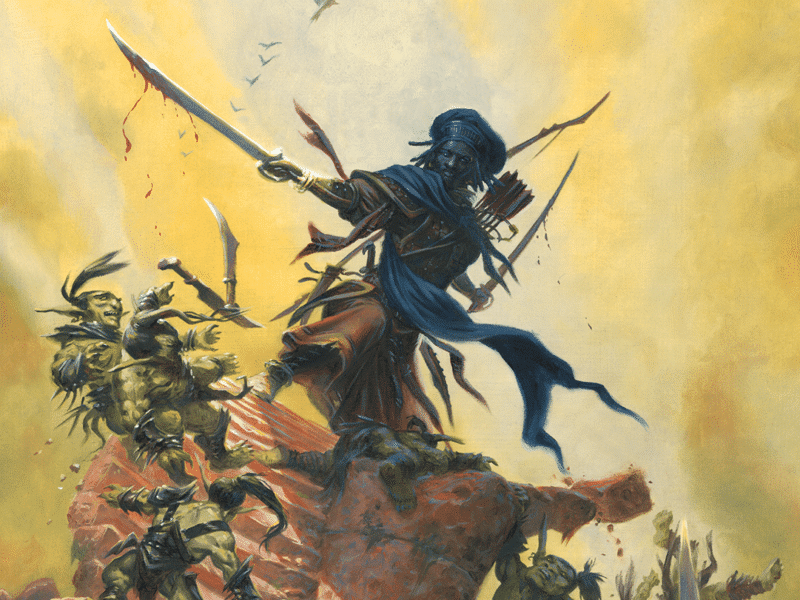In Dungeons & Dragons, a character’s traditional objectives are to find valuables (and steal them), grow in power so that you can discover even nicer valuables, and keep your character alive so that they can brag about all their escapades when they get back home. As one can expect, there is usually a string of obstacles between a character and these goals, and more often than not, the obstacles have lots of claws and fangs. It follows that there are endless debates in online forums about how to create D&D characters that dish out more damage per round than a combine harvester running on a Potion of Speed.
However, this particular writer and avid D&D player strongly believes that there is an equally important aspect of combat in the game, namely style. Of course, defeating enemies faster increases the chances of acquiring the desired loot, and it’s certainly a good way to prolong the character’s life expectancy. But in truth, how much fun is it to play a colossally effective damage dealer if all they do is the same type of attack over and over?
Note that I’m not talking about the actual dice-rolling here, but the image that you have of your character in your mind! D&D is a game of imagination – of visualising your character dashing into the gnoll-infested grotto, sword held high and shield lowered, while your companions are running right beside you, weaving spells that flash in the dim light and attacking your common foes with spectacular skill and bravery. Never mind the numbers and stats on the dice and the character sheets: the scenes that play out in our minds’ eyes are what create memories of events that never took place in the real world, but nevertheless are lively and vivid. And not only for ourselves, but for our friends around the table (or the world, for online play)! If your group is anything like ours, its members appreciate a few sentences that describe attacks and manoeuvres without going into too much detail.
Now that we’ve established what makes battle properly enjoyable (all right – this is just one player’s option, and your preferences may vary or be totally different! – but bear with me), let’s discuss weapons – and, specifically, using two weapons at the same time.
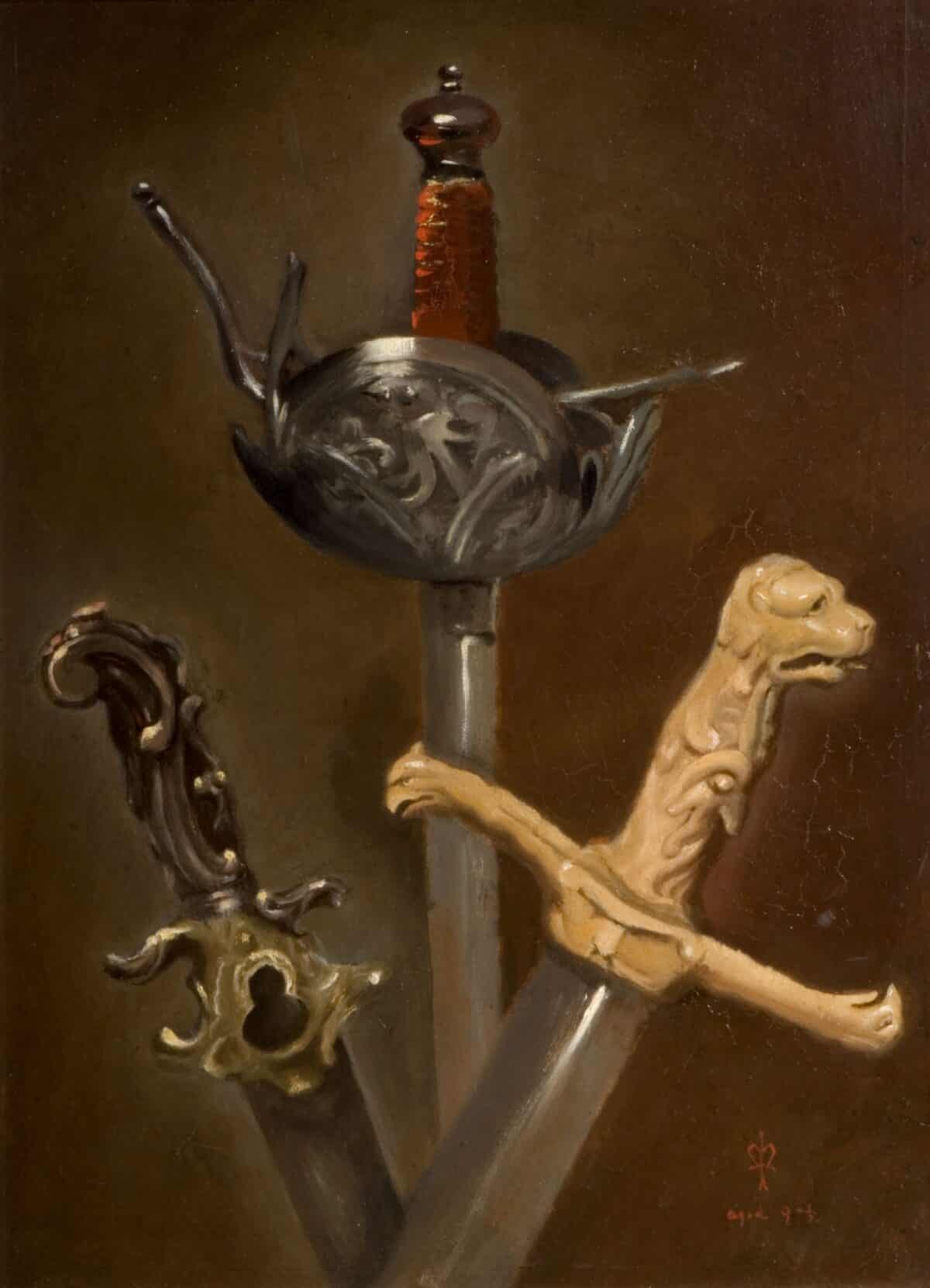
(Photo credits: Birmingham Museums Trust, Unsplash)
When it comes to describing an attack, spellcasting is plain cheating. Casting a lightning bolt, pulling a silent image out of thin air, or using summon aberration to fling a tentacled monster into a fight is inherently flashy and spectacular. A spellcaster barely needs to add a single descriptive word to the sentence “I cast fireball” to evoke the idea of roaring flames and burning orcs in the minds of fellow players. It’s really not quite fair to characters who use regular weapons! “I attack with my sword” or “I fire my crossbow” don’t do very much to set a person’s imagination ablaze.
Obviously, it’s perfectly possible to add much more to a regular attack with a battleaxe! “I twist around, spin my axe horizontally through the air, and give up a tremendous roar as I angle its blade down at the goblin’s head” is more evocative than “I hit the goblin”, or so I would like to argue. However – and here’s the snag – it requires effort, especially if one wants to avoid repetition.
Enter the rule that allows D&D characters to wield two weapons at the same time. Because a surefire way to make a character at least appear mightily impressive and dangerous as they launch themselves into a chaotic battle is to let them do so while holding one weapon in each hand. It’s not necessarily effective, and definitely not especially realistic, but it’s a seriously impressive look. You and the other players will automatically picture the character in a more tangible and striking fashion, without you having to do anything other than make a few initial tweaks. Surely that’s worth losing out on a few degrees of efficiency in terms of slashing-damage-dealt-per-minute? Of course it is! This is why you frequently see truly badass NPCs and villains use two weapons simultaneously. Yes, I’m thinking of a certain scimitar-slinging dark elf, of course – but there are many others!
Now, given the many different weapons that are found in the D&D core rulebooks, there is a huge number of combinations available to the characters. Fortunately, this article will put you on the right track by listing a selection of exceedingly sophisticated and eye-catching pairings. In fact, some of them are even borderline efficient!
A few basic points
Just to infuse this post with a modicum of soundness and not throw all sense out the window, let’s look at a few important aspects of two-weapon fighting. For example, a key thing to remember is that having a weapon in your off-hand (in other words, not your main one), lets you attack one more time during your turn as a bonus action. As we all know, we only get one such action per turn, so make sure you don’t need it for other reasons while you’re laying into that horde of trolls storming down the hill. Also, the feat Dual Wielder is an absolute must – it improves your AC by one step, you can also draw both weapons more quickly, and – critically – having this feat means that you can use two-weapon fighting even if one of the one-handed weapons you’re wielding isn’t a light one. In other words, the feat lets you use heavier weapons, which in turn means more damage dealt and more weapons to choose from. In addition, if your character’s class means you have access to the fighting style called Two-Weapon Fighting, this will further ramp up your damage output.
Also, here’s the inevitable disclaimer: from what I can tell, and barring the use of magic or special items, it is nigh-impossible – at least for a fighter – to make two-weapon fighting as effective as using a two-handed weapon. It seems to be how the rules are written in the fifth edition. But I’d be happy to be proved wrong!
With all that out of the way, let’s dive into the sweetest combinations of arms, with some notes on why each pairing is so remarkably dashing.
Double daggers, twice the fun
This is a classic, reasonably effective, and quite possibly the most realistic combination on this list. But more importantly, two daggers look so dastardly snazzy! A pair (or a dozen) of sharp daggers carried on one’s person is the archetypal rogue’s trademark, and while the blades may be small, they signal skill and attitude. After all, they’re called finesse weapons for a reason (and that means you get that coveted sneak damage). Oh, and you can (and should) throw them, too! Thrown daggers are not especially deadly, but they’re an essential part of tavern brawls and shady backstreet encounters.
Bigger blades for burlier beasts
If you like the idea of two moderately sized blades, but worry that their measly damage will result in your character ending up as some monster’s impromptu dinner, consider using two shortswords instead. Or, if you want to go even larger, use a pair of scimitars, an approach that’s been immortalised by some unique rangers out there. You might not be able to throw these weapons, but on the plus side, you’ll be disposing of your foes a little faster. And characters who carry two swords make a certain kind of impression, too: packing multiple daggers might suggest that you’re the rogue-ish type, but having two proper (if short) swords strapped to your side is a real in-your-face statement that you mean business.
Axing for trouble
Using two handaxes combines some of the advantages of daggers and short swords. While this means that you can’t use your weapons for making sneak attacks, they have higher base damage and you can still throw them. What’s more, you’re wielding two axes! Dwarven characters might find this particularly appealing, but it’s also a neat look for barbarians and rugged outlanders in general. There’s the opportunity for amusing contrasts: for a character that will raise eyebrows and possibly cause townsfolk to lock their doors, create a halfling who marches around with two sturdy handaxes by their hip.
Supersized savagery
As the Dual Wielder feat means that the offhand weapon no longer needs to be light, it opens a world of intimidating and fun options – especially when one considers that all versatile weapons can be used one-handed. This allows us to make characters that storm into melee wielding, for example, two longswords. Anyone who has seen the Game of Thrones series might recall the flashback with the fight outside the Tower of Joy, which offers a great example of how imposing such a combination might look (even if that particular battle didn’t end well for the knight who swung the two swords). Likewise, you can use two battleaxes, a style that’s likely to appeal to combat-oriented dwarves and barbarians.
Fearsome flailing
If you definitely want to announce to the world that you are one seriously wicked (and possibly slightly unhinged) adventurer, purchase two flails and set off on your quest. The sight of a double-flail-wielding combatant is one to behold, and if you’re lucky, you’ll scare off the opposition before there even is a fight. A nice DM might even consider enforcing enemies to save against fear. On the other hand, sensible DMs will probably home-rule that this unwieldy combination of weapons comes with complications. Still, the rules as written allow it – so if mayhem is your medicine, this is your brew!
Whiplash and lash again
Yes, you can totally use two whips. It’s not going to be the most effective way to deal with large monsters, but what you lack in efficiency, you more than make up for in originality!
Mix and match to the max
As you may have noticed, the examples above are limited to pairings of similar weapons – but this is just for comparison, because the rules allow all kinds of combinations! Sword and axe? Scimitar and mace? It’s your (war) pick! Some combinations have a rather classic feel to them, such as rapier and dagger (a rather musketeer-like way of fighting) or longsword and dagger (used with deadly efficiency by Jamie in Game of Thrones). There’s also the chance to go full-on gladiator and use a net and a trident, or to sneak across the rooftops with a dagger in one hand and a hand crossbow in the other.
These are just a few of the interesting choices that are available for player characters who want to look spectacular in general and fight in a fashion that will dazzle friends and foes alike. So next time you’re rolling a new budding hero for D&D, take the opportunity to impress everyone else by using two weapons and stun the crowd by putting on an extraordinary display of martial skill.

